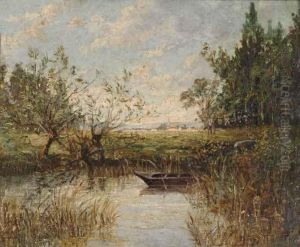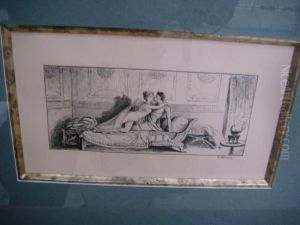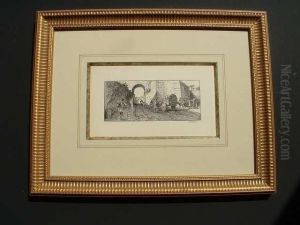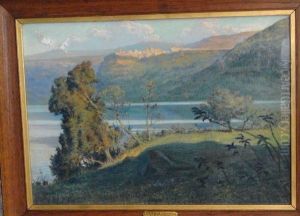Pierre Gusman Paintings
Pierre Gusman was born in 1862 in Marseilles, France. A distinguished figure in the world of art and archaeology, Gusman's career spanned several decades during which he made significant contributions to the study and appreciation of ancient Roman art and architecture. Not only was he an accomplished artist in his own right, with a keen eye for detail and a profound understanding of classical beauty, but he was also a revered scholar and an authoritative writer on archaeological subjects.
Educated in the vibrant cultural milieu of late 19th-century France, Gusman developed an early fascination with the ancient world. His passion for Roman antiquities was not only academic; it was deeply artistic, compelling him to explore the ancient world not just through excavation and study, but through the lens of artistic representation. His travels to Italy and other locations rich in Roman heritage were not merely research trips but artistic pilgrimages, seeking inspiration and insight from the ruins of the past.
Gusman's contributions to the field of archaeology were matched by his prowess as an illustrator and engraver. His detailed drawings and engravings of ancient sites and artifacts served as valuable resources for both scholars and the general public, bridging the gap between academic research and popular interest in archaeology. His works were celebrated for their accuracy and artistic merit, capturing the beauty and intricacy of ancient art and architecture with a draughtsman's precision and an artist's sensibility.
Throughout his career, Pierre Gusman was deeply involved in the dissemination of archaeological knowledge. He authored several books and numerous articles on various aspects of Roman art and archaeology, making significant contributions to the field's body of literature. His writings not only reflected his extensive knowledge and deep appreciation of ancient cultures but also his skill in communicating complex ideas to a broad audience.
Pierre Gusman passed away in 1949, leaving behind a legacy that continues to inspire and inform scholars, artists, and enthusiasts of ancient Roman culture. His life's work stands as a testament to the enduring fascination with the ancient world and the vital role that art and scholarship play in understanding our past.



